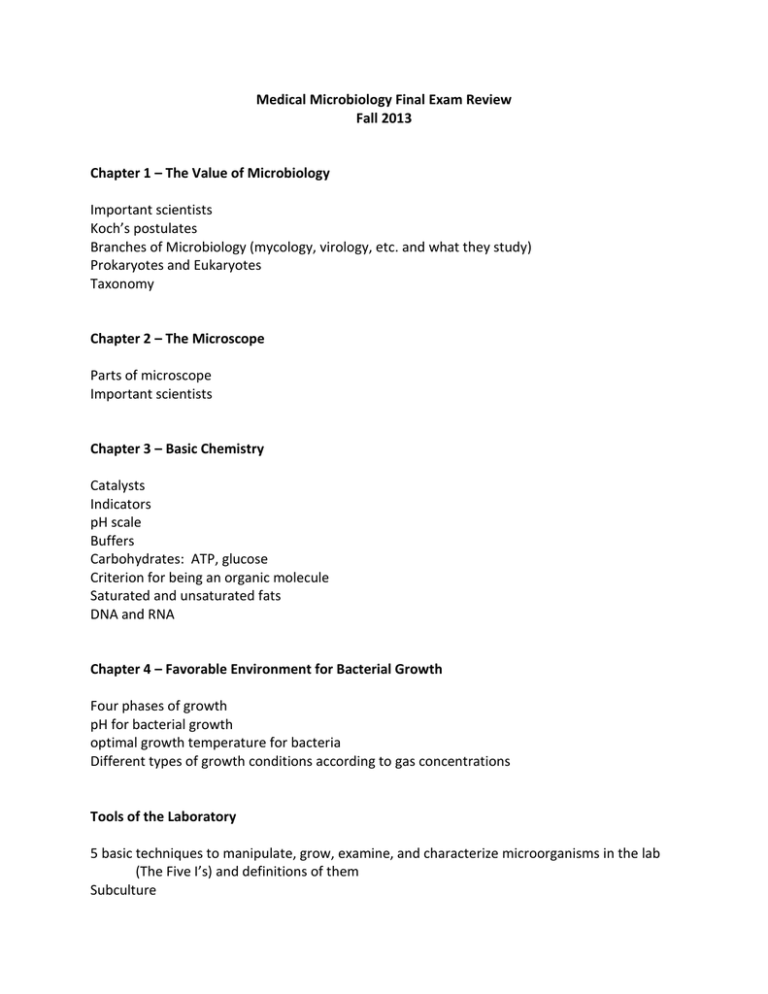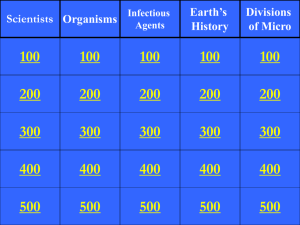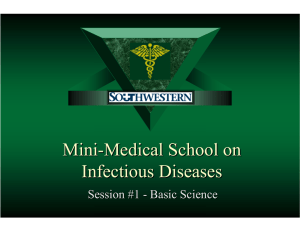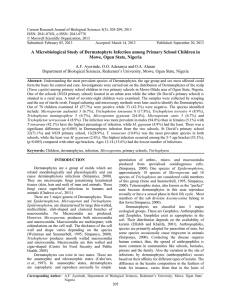Medical Microbiology Final Exam Review Fall 2013 Chapter 1 – The
advertisement

Medical Microbiology Final Exam Review Fall 2013 Chapter 1 – The Value of Microbiology Important scientists Koch’s postulates Branches of Microbiology (mycology, virology, etc. and what they study) Prokaryotes and Eukaryotes Taxonomy Chapter 2 – The Microscope Parts of microscope Important scientists Chapter 3 – Basic Chemistry Catalysts Indicators pH scale Buffers Carbohydrates: ATP, glucose Criterion for being an organic molecule Saturated and unsaturated fats DNA and RNA Chapter 4 – Favorable Environment for Bacterial Growth Four phases of growth pH for bacterial growth optimal growth temperature for bacteria Different types of growth conditions according to gas concentrations Tools of the Laboratory 5 basic techniques to manipulate, grow, examine, and characterize microorganisms in the lab (The Five I’s) and definitions of them Subculture Mixed Culture Contaminated culture Isolation methods What is agar, what is it used for, and why we use it Different types of stains Chapter 5 – The Cellular Structure and Characteristics of Eukaryotic Cells Diffusion Tonicity – hypotonic, hypertonic, isotonic What are cells What type of cell are all bacteria Osmosis Cell organelles and their functions Difference between eukaryotic and prokaryotic cells Structure of cell membrane Chapter 6 – The Cellular Structure and Characteristics of Prokaryotic Cells Endospore Toxin Capsule Slime layer Gram positive bacteria, their structure, and how they stain Gram negative bacteria, their structure, and how they stain Structure of bacteria Nucleoid Conjugation Chapter 7 The Structure and Behavior of Bacteria Shapes of bacteria How different shapes of bacteria are arranged (strep – chains; staph – clusters, etc.) and examples Chapter 9 – Fungi Dermatophytes: definition and examples of mold and yeast dermatophytes Pathogenic yeast and mold What type of cell are molds and yeast? Mycology What are mycoses? Chapter 10 – Parasites Symbiosis Causes of: head lice, genital infections, dysentery Infestation Infection Emerging intestinal parasite Chapter 12 – Viruses Lytic cycle Lysogenic cycle Structure of viruses Bacteriophage Rabies Vaccine Oncovirus Oncogenic Diseases/illnesses caused by viruses Viruses that are linked to certain types of cancer Chapters 14 – How Microorganisms Cause Infection Fomites How respiratory infections are spread Incubation period How infection is spread by direct contact How infection is spread by indirect contact Portals of entry into the body for pathogens Chapter 15 – Body Defenses Pus How viruses kill Three lines of defense Function of white blood cells (leukocytes) Chapter 16 – Immunity Active immunity – natural and artificial Passive immunity – natural and artificial Allergic reaction Autoimmune disorders Chapter 17 – Vaccines and Immune Serums Immune serums – what they are, why they are used Antitoxins – what they are and why they are used Edward Jenner








